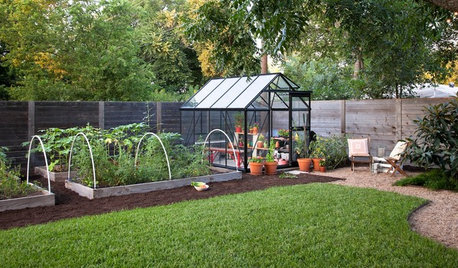how to manually pollinate citrus
lycheeluva
16 years ago
Related Stories

GARDENING GUIDESHow to Keep Your Citrus Trees Well Fed and Healthy
Ripe for some citrus fertilizer know-how? This mini guide will help your lemon, orange and grapefruit trees flourish
Full Story
FARM YOUR YARDHello, Honey: Beekeeping Anywhere for Fun, Food and Good Deeds
We need pollinators, and they increasingly need us too. Here, why and how to be a bee friend
Full Story
EDIBLE GARDENSGarden BFFs? Why Your Vegetables Are Begging for Companion Plants
Foster friendships among plants for protection from pests, pollination support and color camaraderie
Full Story
NATIVE PLANTSGreat Design Plant: Wild Bergamot, Friend of Foragers
Nourish butterflies and other winged creatures with the tubular flowers of Monarda fistulosa, a pretty pink native
Full Story
EDIBLE GARDENSA Formerly Weedy Lot Now Brims With Edibles and Honeybees
Photographers transform their barren backyard into an oasis filled with fruit, vegetables, honey, eggs and more
Full Story
FARM YOUR YARDIf You Have Room for Only One Fruit Tree ...
Juice up a small garden with one of these easier-care or worth-the-effort fruit trees for a mild climate
Full Story
HOUSEKEEPINGTackle Big Messes Better With a Sparkling-Clean Dishwasher
You might think it’s self-cleaning, but your dishwasher needs regular upkeep to keep it working hard for you
Full Story
GARDENING GUIDESWe Bust 4 More Native Plant Myths
Have you been taken in by these fallacies about gardening with native plants?
Full Story
SPRING GARDENINGTop 10 Scented Plants for Your Garden
A palette of perfumed plants can transform even the smallest of gardens into a sensory delight
Full Story
EDIBLE GARDENSHow to Grow 10 Favorite Fruit Trees at Home
Plant a mini orchard in fall, winter or early spring to enjoy fresh-off-the-tree fruit the following year
Full StorySponsored
Most Skilled Home Improvement Specialists in Franklin County
More Discussions






tsmith2579
lycheeluvaOriginal Author
Related Professionals
70037 Landscape Architects & Landscape Designers · Bridgetown Landscape Architects & Landscape Designers · Mountain Brook Landscape Architects & Landscape Designers · Wheeling Landscape Architects & Landscape Designers · Gainesville Landscape Contractors · Cornelius Landscape Contractors · Dudley Landscape Contractors · Mission Viejo Landscape Contractors · Petaluma Landscape Contractors · Raleigh Landscape Contractors · Royal Oak Landscape Contractors · San Bruno Landscape Contractors · Tavares Landscape Contractors · Tustin Landscape Contractors · Silver Firs Landscape Contractorsrhizo_1 (North AL) zone 7
lycheeluvaOriginal Author
tsmith2579
lycheeluvaOriginal Author
malcolm_manners
rhizo_1 (North AL) zone 7
tsmith2579
ashita
ashita
citrange2
ashita